History of Kyzyl
After the Mongolian Revolution of 1911, the Tuvan princes were divided into three groups: some supported independence, others offered to be part of Mongolia, the rest suggested to be part of the Russian Empire. After the 1911 Revolution in China (the Xinhai Revolution), Tuvan rulers several times appealed to the Russian government with a request to accept Tuva under the protectorate of the Russian Empire.
It was decided to satisfy the request, and thus Tuva voluntarily became the protectorate of Russia under the name Uryankhay Krai as part of the Yenisei Governorate. To strengthen Russia’s influence in the new territory, as well as to develop trade and create a resettlement base, it was decided to choose a place and begin construction of a resettlement center. In 1914, a village was founded under the name Belotsarsk (literally “white tsar”), which became this center.
In 1915, there were 18 government and 54 private buildings in Belotsarsk, a school, a hospital, a post office, a weather station, and small industrial workshops. The population of Belotsarsk was 468 people.
More historical facts…
The revolutionary events of 1917 in Russia affected the life of Uryankhay Krai. In 1918, the Uryankhay Regional Council was created in Belotsarsk by the Bolsheviks, and congresses of representatives of the Russian and Tuvan population of the region were convened. On March 11, 1918, the Uryankhay Regional Congress issued a decree on renaming Belotsarsk to Uryankhaysk. However, since in the summer of 1918 the town was occupied by units of the Kolchak army, this name did not take root.
The history of Kyzyl could end in 1919, when it was badly damaged during the fighting. Belotsarsk was almost completely destroyed by fire, and its inhabitants moved to other places. In September 1920, the 10th Congress of representatives of the Russian population of Tuva adopted a resolution on the restoration of Belotsarsk and renaming it Krasnyy (“red”) in memory of the fighters, who died for the power of the Soviets. In 1921, its population was no more than 200 people.
On July 25, 1923, Krasnyy was declared the capital of Tuva. On December 24, 1925, it received its current name - Kyzyl (“red” in Tuvan language). Capital status contributed to the rapid development of the town. In the 1920s, the first stone buildings were constructed; enterprises of industry, transport, educational, and cultural institutions were opened. The Tuva People’s Republic was de jure an independent state, but in fact was under Soviet control. By 1930, the population of the town reached 3,000 people.
During the Second World War, the Tuva People’s Republic took the side of the USSR and declared war on Germany on June 25, 1941. Kyzyl became the center of mobilization of forces to provide material assistance to the USSR and the Red Army.
During 1941-1943, the workers of Kyzyl produced more than 70 thousand pairs of skis, 20 thousand pairs of felt boots, about 15 thousand short fur coats, 130 thousand tons of rusks for the needs of the Red Army. Soviet citizens living in Tuva were drafted into the army. Some citizens of the Tuva People’s Republic also volunteered to participate in the battles.
On August 17, 1944, the Special Session of the Small Khural of workers of the Tuva People’s Republic took place in Kyzyl, which adopted a declaration on its joining the USSR. On October 13, 1944, it became an autonomous oblast of the Russian Soviet Federative Socialist Republic. By the end of 1944, the population of Kyzyl doubled and amounted to 6.5 thousand people.
Kyzyl continued to be the capital of the region. Until that time, only small enterprises operated in the town. After the official entry into the USSR, Kyzyl began to develop rapidly. In 1959, the population of Kyzyl was 34,462 people.
In 1961, the autonomous oblast was transformed into the Tuva Autonomous Soviet Socialist Republic. In 1989, the population of Kyzyl was 84,641 people.
Since 1991, Kyzyl has been the capital of the Republic of Tuva as part of the Russian Federation.
Pictures of Kyzyl
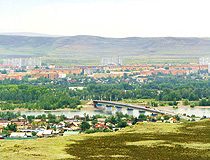
General view of Kyzyl
Author: Roman Petruschin
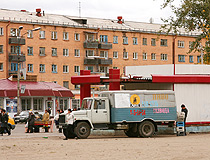
Kyzyl street life
Author: Konstantin Nikishin

Tuvan Music and Drama Theater on the central square of Kyzyl
Author: Ivan Denisov
Kyzyl - Features
Today, the city of Kyzyl is the administrative center of the Tuva Republic. It is an industrial, transport, scientific, business, and cultural center, a member of the Association of Siberian and Far Eastern Cities. The government of the republic, the Supreme Khural (parliament), the largest cultural, educational, sports institutions, museums and libraries, book publishing, newspaper editorial offices, television and radio companies are located here.
Kyzyl is located in the Tuva depression, at the confluence of two rivers - the Big Yenisei and the Small Yenisei, which form the Yenisei River, about 390 km from the railway station of Minusinsk.
According to the 2010 census, Tuvans made up about 68% of the population, Russians - 28%. A significant part of Tuvans traditionally practice Buddhism. Shamanism - one of the oldest religious cults of mankind - is also highly respected among Tuvans. And Orthodoxy ranks third in popularity.
The specificity of the Tuva Republic and its capital is that this region is stretched out in the south of Siberia along the border with Mongolia, and, at the same time, it is separated from the rest of Siberia by mountain ranges, which complicates the development of transport communications and integration into the economy of Russia.
This city is equated to the regions of the Far North. Its climate is dry and sharply continental. Winter (November-March) is extremely harsh for this latitude (the same latitude as London, Kursk, and Orenburg). The average temperature in January is minus 28.6 degrees Celsius. Summer is hot; the average temperature in July is plus 20.4 degrees Celsius.
Kyzyl is the main transport hub of the republic. The federal highway R257 “Yenisei” connects Kyzyl with Abakan and Mongolia. There is a regular bus service from this city to Abakan, Krasnoyarsk, and Novosibirsk. There is no railway connection with other cities of Russia.
The airport “Kyzyl” is located in the southern part of the city. It provides regular air traffic with Krasnoyarsk, Novosibirsk, Irkutsk, Moscow, as well as with remote settlements of the Tuva Republic.
The construction of the Sayano-Shushenskaya Dam had a dual impact on the development of the city. The largest power plant in Russia in terms of installed capacity, it is located on the Yenisei River, on the border between Krasnoyarsk Krai and the Republic of Khakassia.
On the one hand, the Tuva Republic and Kyzyl received cheap electricity, which made it possible to develop industrial production and meet the needs of the growing population. On the other hand, the dam cut the main transport artery (the Yenisei River) between the republic and the rest of Siberia.
Today, the lack of affordable transport links still negatively affects the lives of locals. Due to isolation, high costs and low investment attractiveness, conditions for business are significantly inferior to neighboring regions.
Kyzyl within a radius of 150 km is surrounded by salt and mud lakes, mineral and radon springs, archaeological monuments. In the immediate vicinity there is a mountain slope convenient for hang gliding, slalom, which, in combination with balneological factors, provides conditions for organizing a modern medical and sports complex.
Hunting, skiing, ice fishing, as well as mud and radon clinics can become the basis for attracting a larger number of Russian and foreign tourists and businessmen to the republic in winter. Kyzyl also has the potential for river tourism due to its location on the bank of the Yenisei, the most abundant river in Siberia.
Main Attractions of Kyzyl
Obelisk “The Center of Asia” - one of the symbols of Tuva and the most famous monument of Kyzyl. The globe with the contours of the continents rests on the backs of the eastern dragons. Above it, a three-sided 10-meter pillar rises decorated with high reliefs of mythical animals of the Buddhist horoscope.
This obelisk is a symbol of the geographic center of Asia, and not an exact geodetic point that defines it. The monument is located on the left bank of the Yenisei River, slightly below the confluence of the Bolshoy Yenisei and Malyy Yenisei rivers. Krasnykh Partizan Street, 9.
Monument to Kadarchy (Stockbreeder) - the main symbol of Kyzyl and the Republic of Tuva erected on the top of a small hill opposite the city airport. The sculptural embodiment of a shepherd, dressed in national clothes and standing firmly in his native land, embodies the soul of the freedom-loving Tuvinian people. At the foot of the monument you can see dozens of white stones symbolizing a flock of sheep.
National Museum of the Republic of Tuva. This is a large white building located in the center of Kyzyl, at the intersection of Kochetova, Titova and Lenina streets. It is one of the main cultural and educational centers in the republic. The museum shows almost the entire history and culture of the Tuvan people from ancient times to the present day. Scythian gold and jewelry from the famous Arzhan-2 mound are among the most valuable exhibits of this museum. Titova Street, 30.
Buddhist Temple “Tsechenling” - one of the most striking sights of Kyzyl. The name of the temple means “abode of boundless compassion”. It is located in the very center of Kyzyl, not far from the embankment and the central square. Shchetinkina-Kravchenko Street, 1.
Buddhist Prayer Drum. The project for the construction of this Buddhist shrine was initiated by the monks of the Indian monastery Gyudmed. Inside the drum there are several hundred million tightly rolled mantra scrolls. It is believed that one revolution of the drum is equivalent to reading them all at the same time. The drum is placed in a beautiful pagoda specially built above it in the very center of Kyzyl on the square in front of the Tuvan Music and Drama Theater. Lenina Street, 35.
Religious and Cultural Center of Shamanism “Ai-Churek”. The center specializes in conducting rituals, healing practices, protecting the holy places of the Tuva Republic. Its primary mission is to preserve the traditional way of life and spiritual values. Krasnykh Partizan Street, 18A.
Center of Tuvan National Culture and Crafts. The center’s activities are focused on the preservation of folk art, cuisine, rituals, folklore. Master classes on the manufacture of national clothes and products of art crafts are held here, as well as performances by folk groups. The wooden building of the cultural center is rightfully one of the most picturesque buildings in Kyzyl. Lenina Street, 7.
Mount Dogee - the main natural attraction of Kyzyl located in close proximity to the city, on the right bank of the Yenisei River. The top of the mountain offers magnificent views of Kyzyl and its surroundings. The height of Dogee is a little over 1,000 m. During the ascent, tourists admire the beautiful landscapes and petroglyphs left on the slopes of the mountain by the ancient Scythians.
Ethnocultural Complex “Aldyn-Bulak” (“Golden Spring”). This tourist complex is located on the bank of the Yenisei River, about 45 kilometers west of Kyzyl. Its architectural and construction solutions are based on the idea of reflecting the national features of Tuva as fully as possible. This is not only a collection of exotic monuments, but also a base for active recreation.


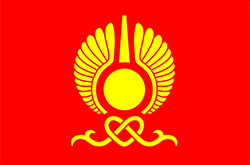
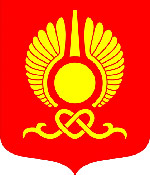
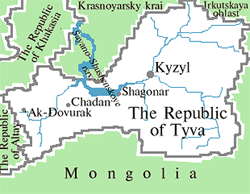



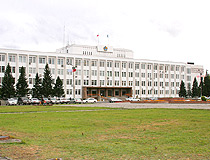
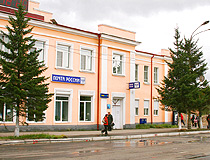
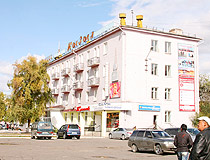
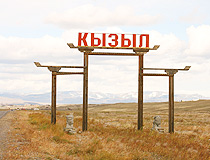
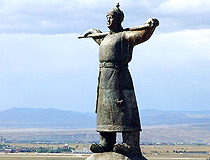
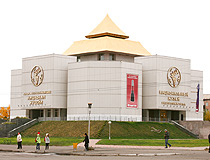
The comments of our visitors